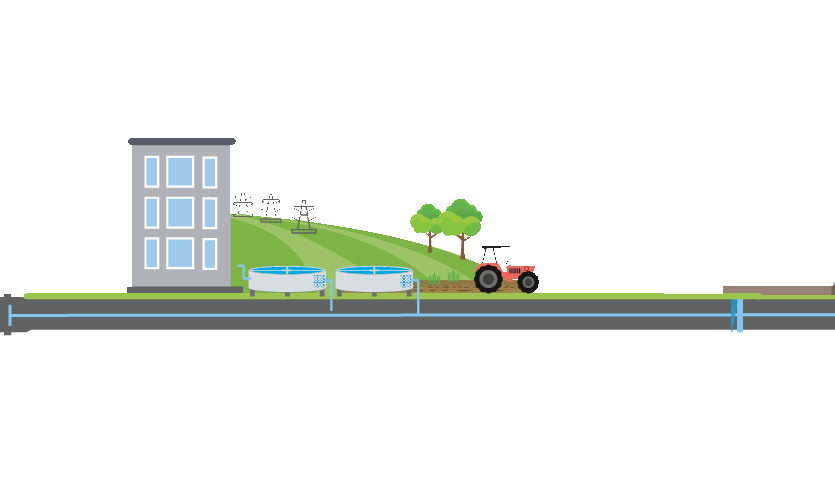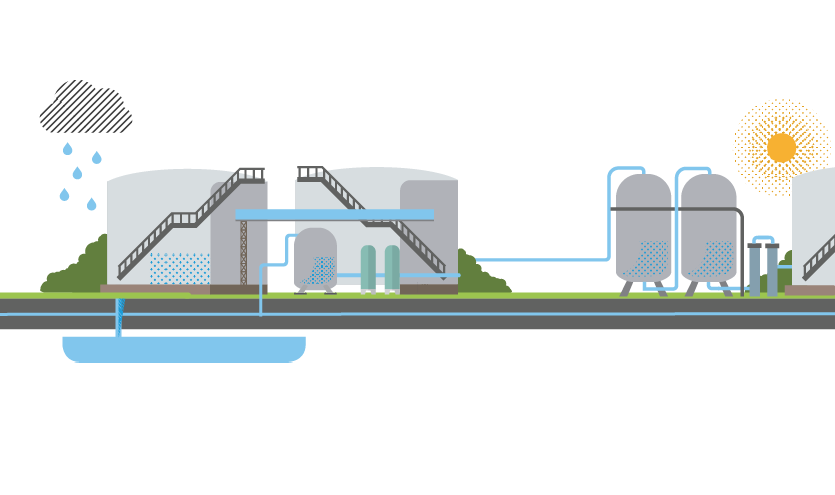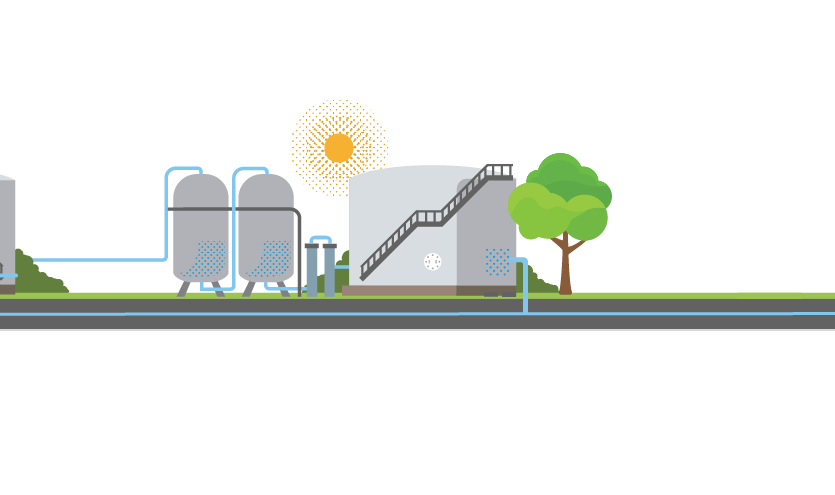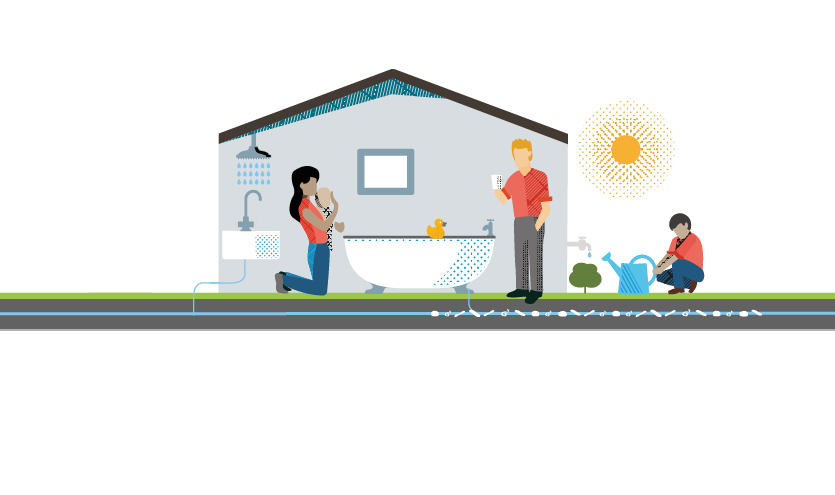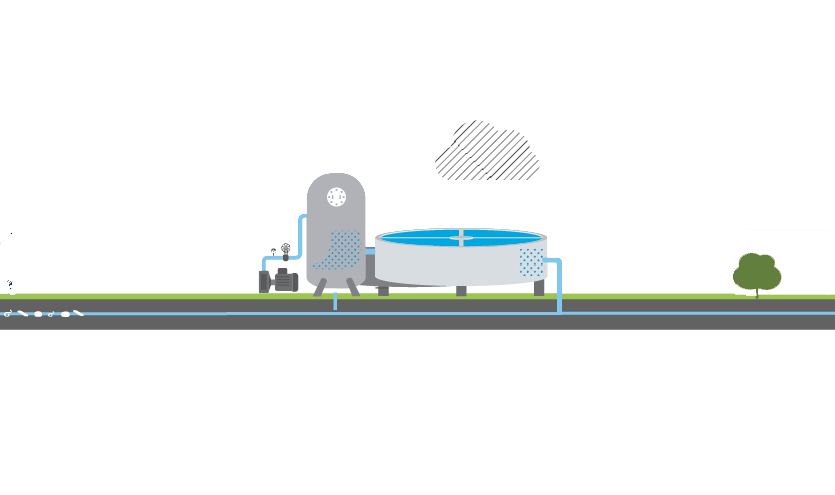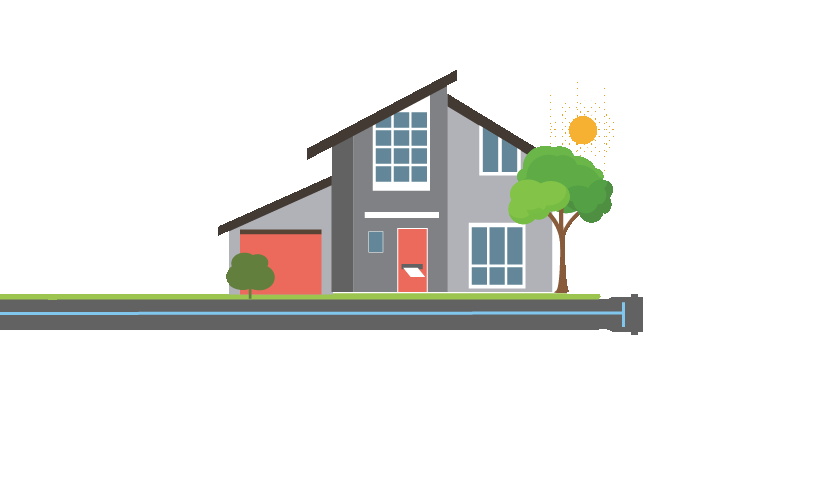
Southern Water Annual Report and Financial Statements 2022–23
How we operate
Our vision is to create a resilient water future for our customers in the South East.
Maintenance and development
We constantly monitor our sites and networks, carrying out maintenance and developing new assets and equipment to make sure they are meeting the standards set by our regulators. Failure to monitor, maintain and increase the capacity of our sites and networks could pose risks to public health, and result in disruptions to supply, injury to our employees or customers, and damage to property.
Ensuring future
supply
Climate change and population growth in the South East present very real challenges that initiatives like our Water for Life – Hampshire programme are looking to address through bulk water transfers with neighbouring water companies, water recycling projects and a host of other initiatives, all of which will be needed to secure reliable water supplies for the future. We are also working to reduce the amount of water lost through leaks on our network, and we are working with our customers to help them use less water.
Associated
risks
If we fail to plan properly and take account of factors such as the impact of climate change, we risk not being able to maintain supplies to our customers, which in turn can lead to financial penalties and reputational damage.
Living our purpose
Our purpose is why we exist. It drives our long and short-term decision making and is centred
around the value we provide to our customers and stakeholders.
What we do and where
We provide essential water services to 2.7 million customers, and wastewater services to more than 4.7 million customers
across Kent, Sussex, Hampshire and the Isle of Wight.
The external environment
The way we operate as a business is impacted by a number of external factors – social, political, environmental, economic, regulatory and technological – that we must consider and manage the impact of.
Environmental factors
Our natural environment is under pressure from population growth and climate change. We must continue to adapt and prepare to manage future impacts.
Economic environment
We are impacted by changes in financial markets, interest rates, inflation and other commodity prices, and we must manage these to reduce risk.
Regulatory environment
We must be responsive to regulatory requirements and prepare for future challenges.
Social environment
As a provider of essential services, we have a direct impact on our local communities. We must do all we can to support and understand our customers.
Innovation and technology
We are always improving our services, taking advantage of new technologies and innovations, wherever they come from.
Political environment
Decisions made by politicians and policymakers have the potential to impact our operations. We must follow any government directions, and adapt to policy developments.
Our key resources
For any business to be truly sustainable it needs to consider its impacts and dependencies, and this means going beyond tracking financial and operational measures to consider social and environmental resources and how they can affect our ability to create value over time.
Natural
Natural resources that we rely on, such as water.
People
Skills, capabilities and wellbeing of our employees and partners.
Financial
Financial health, including equity, debt and pensions.
Manufactured
Sites, equipment, networks and IT.
Social and relationship
Engagement, our reputation and the value we create for our communities.
Intellectual
Knowledge, systems, processes, procedures and the data we hold.
Underpinned by our risk and value process
Our risk and value (R&V) process improves our decision-making process, about how to invest, build and run our assets, and allows us to collaborate more effectively with our suppliers and partners. During the year, a number of environmental
considerations were added to this process to make sure we are considering the natural capital (the wider value of services provided by nature) and carbon values in our decisions, so we can make them based on best value.
This approach triggers conversations and thinking about alternative sustainable solutions and drives innovation and partnership working. It is already showing us its value in supporting nature-based wetland solutions for wastewater treatment.
How we do it
Our Water for Life Business Plan 2020–25 takes us one step closer to achieving our vision of a resilient water future for customers in the South East.
Developed following extensive consultation with our customers and stakeholders, over the five-year period it will deliver significant performance improvements, including a 15% reduction in leakage, improvements to 182.3 kilometres of rivers and a further 155,000 customers supported through financial assistance schemes, with bills reducing by 18% in real terms.
Who we deliver value for
The water cycle touches and enables every part of life, so our stakeholder base is diverse.
Customers and communities
The enviroment
Our people and partners
Regulators
Investors
Our planning horizons and strategy
Our approach to sustainability
We operate in an environmentally and socially conscious manner and uphold the highest standards of corporate governance. Behaving in a responsible manner, ‘Doing the Right Thing’ and ‘Working with Care’ are core values that inform our decision making at every level of the organisation.
Delivering value to our stakeholders
Water enables everything we do so we have a responsibility to meet the needs of a range of stakeholders.

